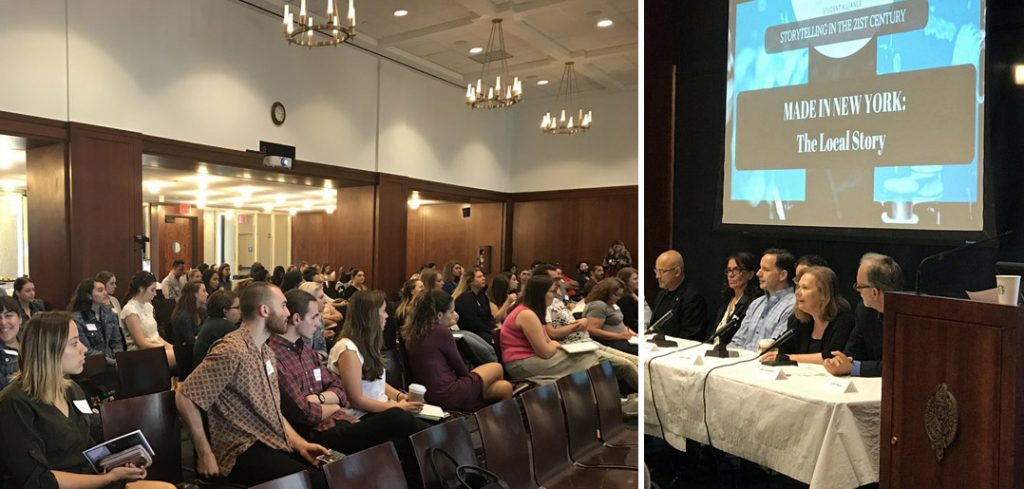Despite these achievements, women still remain underrepresented in the film and television industry, according to panelists who spoke on Sept. 23 at Fordham University.
A panel discussion, “Women in Media: The Future is Female,” featured five female professionals working behind and in front of the camera. It marked the final presentation of Storytelling in the 21st Century Summit 2017, a daylong conference in which New York City-based media professionals shared insider industry knowledge and professional advice to Fordham students and aspiring media professionals. It was co-sponsored by the Department of Communication and Media Studies and the Fordham chapter of the New York Film & Television Student Alliance, among others.
About, for, and by women
Although she was “thrilled” with the Emmy results, Barbara De Fina, vice-chair of the Producers Guild of America, cautioned, “it’s just one season—we can’t get complacent.”
“If we want awards for women and people of color, we need to have film and television made about, for, and by women and people of color,” said De Fina, the producer of such feature films as Goodfellas, The Last Temptation of Christ, and The Grifters.
Other panelists noted that the barriers to female recognition often become even greater after monumental wins.
Still, increased demand for content on streaming services creates both new opportunities for women and people or color, new platforms where “irregular” content is more welcome, and more role models.
“If you can see it, you can be it,” said moderator Chrissy Guest, film producer and assistant professor of television production at Ithaca College.
Systematic changes in the industry are still necessary to increase opportunities for those who lack access to the industry, said panelists. Lisa Goldman, president of the New York Chapter on Women in Animation, noted that more than 60 percent of animation and art school students are women. Yet, they hold only 20 percent of the creative jobs in animation.
Evening out representation
She said Women in Animation has set a goal to reach 50/50 representation in the field by 2025.
Christina DeHaven-Call, academic director at the Undergraduate Film and Television Program at NYU’s Tisch School of the Arts, said that her program is committed to admitting an even ratio of female and male students.
But the future of the film and television industry, although encouraging and empowering, will also require being cognizant of one’s implicit biases in hiring and business decisions, said panelists.
“Change is in the air, but every single person in the industry needs to commit to changing the way the industry works,” said Terry Lawler, Executive Director of New York Women in Film and Television.
Also on the panel were: Kathryn Sheldon, freelance photographer and former MTV and NBC producer; and Terra Bliss, vice president, Panavision.
— Rebecca Sinski

